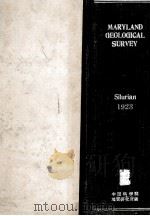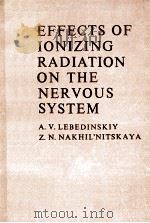《the silurian system founded on geological researches》
| 作者 | 编者 |
|---|---|
| 出版 | JOHN MURRAY ALBEMARLE STREET |
| 参考页数 | 768 |
| 出版时间 | 1839(求助前请核对) 目录预览 |
| ISBN号 | 无 — 求助条款 |
| PDF编号 | 813019828(仅供预览,未存储实际文件) |
| 求助格式 | 扫描PDF(若分多册发行,每次仅能受理1册) |

PART Ⅰ3
CHAPTER Ⅰ.INTRODUCTION.Design of the work.—Previous state of geological knowledge.—Order of the older fossiliferous strata. Interval to be filled up, between the secondary deposits previously described, and the older slaty rocks.—Origin of this inquiry, and method pursued in following it out.—General view of the oldest ossiliferous deposits3
CHAPTER Ⅱ.OOLITIC SYSTEM.Inferior Oolite.—Lias.—Outliers of Lias (Pl. 29. figs. 1, 2, 3.)13
CHAPTER Ⅲ.NEW RED SYSTEM.UPPER FORMATIONS.1. Saliferous Marls, Keuper, c.-2. Red Sandstone and Quartzose Conglomerate (Pl. 29. figs. 1-4.)27
CHAPTER Ⅳ.NEW RED SYSTEM.LOWER FORMATIONS.3. Calcareous Conglomerate.-4. Lower New Red Sandstone (Pl. 29. figs. 5. et seq.)46
CHAPTER Ⅴ.TRAP ROCKS.(General view of.)Trap Rocks compared with Volcanic Products, and shown to be of igneous origin.—Distinctions between contemporaneous and intrusive Trap Rocks68
CHAPTER Ⅵ.CARBONIFEROUS SYSTEM.Introduction.—Upper Coal Measures and Freshwater Limestone in Shropshire. (Pl. 29. figs. 5-9.)79
CHAPTER Ⅶ.CARBONIFEROUS SYSTEM (continued).Coal-field of Coal Brook Dale.—Upper Coal and Freshwater Limestone.— Lower Coal or productive Coal and Iron field.—Carboniferous Limestone.—Trap Rocks and Dislocations (Pl. 29. figs. 11-17.)99
CHAPTER Ⅷ.CARBONIFEROUS SYSTEM (continued).Clee Hill Coal-fields ; including the Titterstone Brown Clee ; with descriptions of the underlying forma-tions of Millstone Grit and Carboniferous Limestone (P1. 30. figs. 1, 5-8.)112
CHAPTER Ⅸ.CARBONIFEROUS SYSTEM (continued).Trap Rocks of the Clee Hills ; their composition. and relations ; effects of their eruption. (Pl. 30. figs.6, 8.)125
CHAPTER Ⅹ.CARBONIFEROUS SYSTEM (continued).Coal-field and Trap Rocks of the Forest of Wyre (Pl. 30. figs. 1-9.)131
CHAPTER Ⅺ.CARBONIFEROUS SYSTEM (continued).Coal-field of Oswestry (North Welch Coal-field), including Coal Measures, Millstone Grit, and Carboniferous Limestone.—(Pl. 30. f. 14.) Concluding Observations on the Origin of the Salopian Coal fields141
CHAPTER Ⅻ.CARBONIFEROUS SYSTEM (continued).Coal-field of Newent.—Carboniferous Limestone of South Wales and Monmouthshire—Organic remains of the formation (Pl. 30. fig. 10. Pl. 31. f. 1. Pl. 34. figs. 5-9.)153
CHAPTER ⅩⅢ.CARBONIFEROUS SYSTEM (concluded).Principal Outliers and Dislocations of the Carboniferous Limestone on the northern and western edges of the South Welch Coal Basin (Pl. 30. figs. 11-13. Pl. 31. f. 1. Pl. 34. f. 6.)162
CHAPTER ⅩⅣ.OLD RED SYSTEM.1. Conglomerate and Sandstone.-2. Cornstone and Marl.-3. Tilestone (Plates 31-36.)169
CHAPTER ⅩⅤ.OLD RED SYSTEM (continued).Trap-Dykes in the Old Red Sandstone ; Mineral Veins ; Dislocations; Outliers ; Agricultural Characters of the Old Red System185
CHAPTER ⅩⅥ.SILURIAN SYSTEM.Introduction.—Upper Silurian Rocks.—lst Formation or " Ludlow Rocks." (P1. 31. figs. 2-5.)195
CHAPTER ⅩⅦ.UPPER SILURIAN ROCKS (continued).2nd Formation or " Wenlock Limestone." (Pl. 31. figs. 2-5.)208
CHAPTER ⅩⅧ.SILURIAN SYSTEM (continued).Lower Silurian Rocks.-3rd Formation or " Caradoc Sandstone."-4th Formation or " Llandeilo Flags."(Plates 31, 32, 34.)216
CHAPTER ⅩⅨ.SILURIAN SYSTEM (continued).Trap and altered Rocks of the Caradoc, Wrekin, c.—Periods of Volcanic Eruption.—Dislocations and Outliers of Silurian Rocks. (Pl. 31. figs. 3, 4. Pl. 32. f. 1.)225
CHAPTER ⅩⅩ.SILURIAN SYSTEM (continued).Joints of the Silurian Rocks.—Landslips.—Wells.—Agricultural characters of the Silurian System243
CHAPTER ⅩⅪ.CAMBRIAN SYSTEM.PART OF THE UPPER GROUP.Mineral Axis of Shropshire.—Cambrian and associated Trap Rocks in the Hills of Longmynd, Ratlinghope, Linley, Pontesford, Lyth, and Haughmond. (P1. 31. f. 4. P1. 32. figs. 1, 2 and 4. Pl. 33. f. I.)255
CHAPTER ⅩⅫ.LOWER SILURIAN AND TRAP ROCKS, LEAD ORES, QUARTZ ROCK, c.Lower Silurian Rocks alternating with Volcanic Grits (Shelve, c.).—Amorphous or Intrusive Trap(Corndon, c.).—Altered Rocks and Veins of Lead.—Quartz Rock of the Stiper Stones. (P1. 32. figs. 1, 2, 3.)268
CHAPTER ⅩⅩⅢ.THE BREIDDEN HILLS AND ADJACENT TRAP AND ALTERED ROCKS.Line of Dislocation produced by the eruption of the Breidden Hills, extends from Montgomeryshire through Shropshire into Staffordshire. (P1. 32. figs. 5-8.)287
CHAPTER ⅩⅩⅣ.SILURIAN ROCKS OF MONTGOMERYSHIRE.Range and Distribution of the Silurian Rocks in Montgomeryshire and the adjacent Districts of Shropshire and Denbighshire.—Their passage into Cambrian Rocks. (P1.32. figs. 1, 2 and 9. Pl. 33. f.1.)300
CHAPTER ⅩⅩⅤ.SILURIAN, CAMBRIAN, AND TRAP ROCKS IN RADNORSHIRE.Upper and Lower Silurian Rocks of Presteign, the Vale of Radnor, Radnor Forest, c.— Cambrian Rocks in West Radnor.—Volcanic Group and Altered Rocks of Old Radnor. (Pl. 33. figs. 1-4.)311
CHAPTER ⅩⅩⅥ.TRAP AND ALTERED ROCKS OF RADNORSHIRE (continued).Group of Llandegley, Llandrindod, and Carneddau near Builth. Mineral Waters of these Tracts.-(Pl. 33. figs. 3-7. See also Map and opposite sketch of the southern end of Carneddau, near Builth)324
CHAPTER ⅩⅩⅦ.SILURIAN, UPPER CAMBRIAN, AND TRAP ROCKS OF BRECKNOCKSHIRE.Silurian Rocks in Brecknockshire, including the anticlinal Ridge of Brecon.—Trap, altered Rocks, and Mineral Waters of Llanwrtyd. (Pl. 31. figs. 1, 6-9.)336
CHAPTER ⅩⅩⅧ.SILURIAN, UPPER CAMBRIAN, AND TRAP ROCKS OF CAERMARTHENSHIRE.Course of Upper and Lower Silurian Rocks maintained by superposition and organic remains.—Great changes in Ethological structure.—Lower Silurian where best developed—in parts affected by slaty cleavage.—Fine exhibition of Llandeilo flags, their passage into Cambrian System.—Change of strike as the strata pass into Pembrokeshire.—Cambrian Rocks.—Trap and Altered Rocks.—Mines, c. (P1. 34. figs. 1-11.)347
CHAPTER ⅩⅩⅨ.GEOLOGICAL STRUCTURE OF PEMBROKESHIRE.OVERLYING FORMATIONS.Introduction.—Coal or Culm Measures.—Millstone Grit.—Carboniferous Limestone.—Old Red Sand-stone. (Pl. 35. figs. 1-9.)370
CHAPTER ⅩⅩⅩ. PEMBROKESHIRE.SILURIAN, CAMBRIAN, AND TRAP ROCKS.Silurian System.—Divided into Upper and Lower Silurian Rocks, with full developments of the Caradoc and Llandeilo formations.—Cambrian System and Slaty Rocks.—Stratification and cleavage coin-cident.—Trap Rocks, bedded and amorphous.—Divergent lines of strike explained by eruptive ridges of trap. (Pl. 35. figs. 1, 4, 6, 10, 11, 12.)389
CHAPTER ⅩⅩⅪ.MALVERN AND ABBERLEY HILLS.Silurian System in Worcestershire and the Eastern part of Herefordshire.—Syenite and other Trap Rocks of the Malvern and Abberley Hills, and dislocations of the Silurian System along their flanks. (Pl. 36.figs. 1-8.)409
CHAPTER ⅩⅩⅫ.WOOLHOPE—SILURIAN VALLEY OF ELEVATION.Introduction.—Form of the Valley.—Description of the Silurian Rocks which constitute its encircling ridges and nucleus.—Ancient dislocations which determined its form, fractures, and drainage.—Modern dislocations and landslips.—Drifted matter. (See enlarged Map, p. 427, and coloured sections,Pl. 36. figs. 9a., 9b., and wood-cut p. 429.)427
CHAPTER ⅩⅩⅩⅢ.SILURIAN GROUPS OF USK AND MAY HILL.1. Usk Valley of Elevation, consisting, like that of Woolhope, of the Ludlow, Wenlock and Caradoc Formations. (Pl. 36. figs. 23, 24.)-2. Prolongation of the axis of Woolhope, by May Hill to Purton and Tortworth in Gloucestershire. (Pl. 36. figs. 11-14, 14 bis, 15, 16.)438
CHAPTER ⅩⅩⅩⅣ.ON THE ROCKS OF THE TORTWORTH DISTRICT (GLOUCESTERSHIRE).General succession of strata, from the Inferior Oolite to the Lower Silurian Rocks.—Inferior Oolite and Lias.—New Red Sandstone and Dolomitic Conglomerate.—Coal Measures.—Carboniferous Limestone.—Old Red Sandstone.—Silurian System.—Small development of Ludlow and Wenlock formations.—Caradoc Sandstone clearly exhibited.—Trap Rocks all of intrusive character.—Altered and dislocated deposits.—Strata elevated and thrown into anticlinal forms by the outburst of trap. (P1.36. figs. 16-22.)447
CHAPTER ⅩⅩⅩⅤ.ON THE DUDLEY OR SOUTH STAFFORD AND WORCESTER COAL-FIELD.Introduction.—General arrangement of the Coal-field.—Account of the Formations in descending order.—Lower New Red Sandstone.—Volcanic Grit or Tufaceous Conglomerate.—Coal Measures, includingthe Upper and 10 yard Coal, and the Lower or Ironstone Measures.—Shaft Sections. (P1. 37. figs.1-5.)463
CHAPTER ⅩⅩⅩⅥ.SILURIAN ROCKS OF THE SOUTH STAFFORD AND WORCESTER COAL-FIELDS.Upper Silurian Rocks (Ludlow and Wenlock formations) support the Dudley and Wolverhampton Coal-Fields and rise through them in separate masses.—Lickey Quartz Rock shown to be Caradoc Sandstone, or Lowest Silurian stratum of this district.—Intrusive Trap and altered rocks.—Lines of elevation and location.—Extension of Coal Measures beneath the New Red System. (See Map and P1. 37. figs. 1-9.)480
CHAPTER ⅩⅩⅩⅦ.SUPERFICIAL DETRITUS.Introduction.—Division of the subject of superficial detritus.—Drifts comprised within the hydrographical region of Siluria.—Ancient or submarine condition of this region.—All its ancient drift shown to be of local origin, and caused by local agency of tides and currents, influenced by elevations of the bottom of the sea.—Such drifted matter found on slopes descending from elevated ranges, occupying both lofty and low positions.—Enormous extent of ancient denudation in the transverse valleys now watered by the tributaries-of the Severn.—Distinctions between marine drift and fluviatile accumu-lations.—Recapitulation509
CHAPTER ⅩⅩⅩⅧ.THE NORTHERN DRIFT.On a Northern Drift containing granite bowlders and sea shells of existing species, which covers large parts of Lancashire, Cheshire, Shropshire, Staffordshire and Worcestershire ; prefaced by a sketch of the probable condition of the surface before and during its deposit, comprising a short account of the local detritus which the northern drift covers and with which it is partially intermixed523
CHAPTER ⅩⅩⅩⅨ.NORTHERN DRIFT (continued).On the position of the great Bowlders which characterize the Northern Drift, and on the method of their transport535
CHAPTER ⅩL.SUPERFICIAL DEPOSITS (continued).Early condition of the surface after elevation from beneath the sea.—Lacustrine and broad river period.—Passage to present condition.—Remains of extinct species of quadrupeds.—Ancient river deposits548
CHAPTER ⅩLⅠ.SUPERFICIAL ACCUMULATIONS (concluded).Terrestrial changes within the modern ?ra.—Desiccation of lakes and turbaries.—Modern action of rivers. —Accumulations of blown sand.—Exposure of submerged forests.—Formation of shell marl and travertine558
CHAPTER ⅩLⅡ.CONCLUSION OF PART I.—GENERAL VIEW OF THE FORMER CHANGES OF THE SURFACE.Parallelism and divergence of mountain chains.—Ancient dislocations, and their intensity.—Vastness of scale of former depositary action.—Central heat.—Ancient dislocations and modern changes re-conciled568
PART Ⅱ.ORGANIC REMAINS579
CHAPTER ⅩLⅢ.Introductory View of the Distribution of Organic Remains in the Older Formations579
CHAPTER ⅩLⅣ.ORGANIC REMAINS OF THE OLD RED SYSTEM.Introduction.—Fishes (Pls. 1, 2, 2 bis.)—Mollusca, c. (Pl. 3.)587
CHAPTER ⅩLⅤ.FISHES AND SHELLS OF THE LUDLOW AND WENLOCK FORMATIONS, OR UPPER SI-LURIAN ROCKS.Fishes, c., of the Upper Ludlow Rock, Pl. 4.—Shells of the Upper Ludlow Rock, Pl. 5.—Shells of the Aymestry Limestone, Pl. 7.—Shells of the Lower Ludlow Rock, P1. 8-11.—Shells of the Wenlock Limestone and Shale, Pl. 12, 13605
CHAPTER ⅩLⅥ.SHELLS OF THE LOWER SILURIAN ROCKS.Shells of the Caradoc Formation, Pls. 19, 20, 21.—Shells of the Llandeilo Flags, Pl. 22634
CHAPTER ⅩLⅦ.TRILOBITES OF THE SILURIAN SYSTEM.General view of Trilobites.—Their geological range.—Trilobites of the Ludlow and Wenlock Formations, or Upper Silurian Rocks, Pl. 7, 7 bis, 14.—Trilobites of the Caradoc and Llandeilo Formations, or Lower Silurian Rocks, Pls. 23, 24, 25.— Structure and Affinities of Trilobites645
CHAPTER ⅩLⅧ. ENCRINITES AND ZOOPHYTES OF THE SILURIAN SYSTEM.Crinoidea, Pl. 17 and 18.—Polyparia, Pl. 15, 15 bis, 16, 16 bis.—Other Zoophytes and nondescripts,Pl. 26.—Annelida of the Upper Cambrian Rocks, Pl. 27670
Tabular List of Organic Remains703
Description of Coloured Sections703
Appendix726
Index735
1839《the silurian system founded on geological researches》由于是年代较久的资料都绝版了,几乎不可能购买到实物。如果大家为了学习确实需要,可向博主求助其电子版PDF文件(由 1839 JOHN MURRAY ALBEMARLE STREET 出版的版本) 。对合法合规的求助,我会当即受理并将下载地址发送给你。
高度相关资料
-

- MARYLAND GEOLOGICAL SURVEY SILURIAN
- 1923 BALTIMORE THE JOHNS HOPKINS PRESS
-

- EFFECTS OF IONIZING RADIATION ON THE REPRODUCTIVE SYSTEM
- 1964 PERGAMON PRESS
-

- Proceedings of the Symposium on System Theory
- 1965 Polytechnic Press
-

- The 17th Southeastern Symposium on System Theory: proceedings
- 1985 IEEE Computer Society Press
-

- The 15th Southeastern Symposium on System Theory: proceedings
- 1983 IEEE Computer Society Press
-

- On The Origin of The Solar System
- 1954 Oxford At The Clarendon Press
-

- ON STRENGTHENING THE PARTY COMMITTEE SYSTEM
- 1961 FOREIGN LANGUAGES PRESS
-

- MECHANISMS OF DRUG ACTION ON THE NERVOUS SYSTEM
- 1979 CAMBRIDGE UNIVERSITY PRESS
-

- the middle silurian rocks of north wales
- 1949 EDWARD ARNOLD & CO
-

- THE SILURIAN GASTROPODA AND PTEROPODA
- 1884 Stockholm
-

- EFFECTS OF IONIZING RADIATION ON THE NERVOUS SYSTEM
- 1963 ELSEVIER PUBLISHING COMPANY
-

- MARYLAND GEOLOGICAL SURVEY SILURIAN
- 1913 BALTIMORE THE JOHNS HOPKINS PRESS
提示:百度云已更名为百度网盘(百度盘),天翼云盘、微盘下载地址……暂未提供。➥ PDF文字可复制化或转WORD


